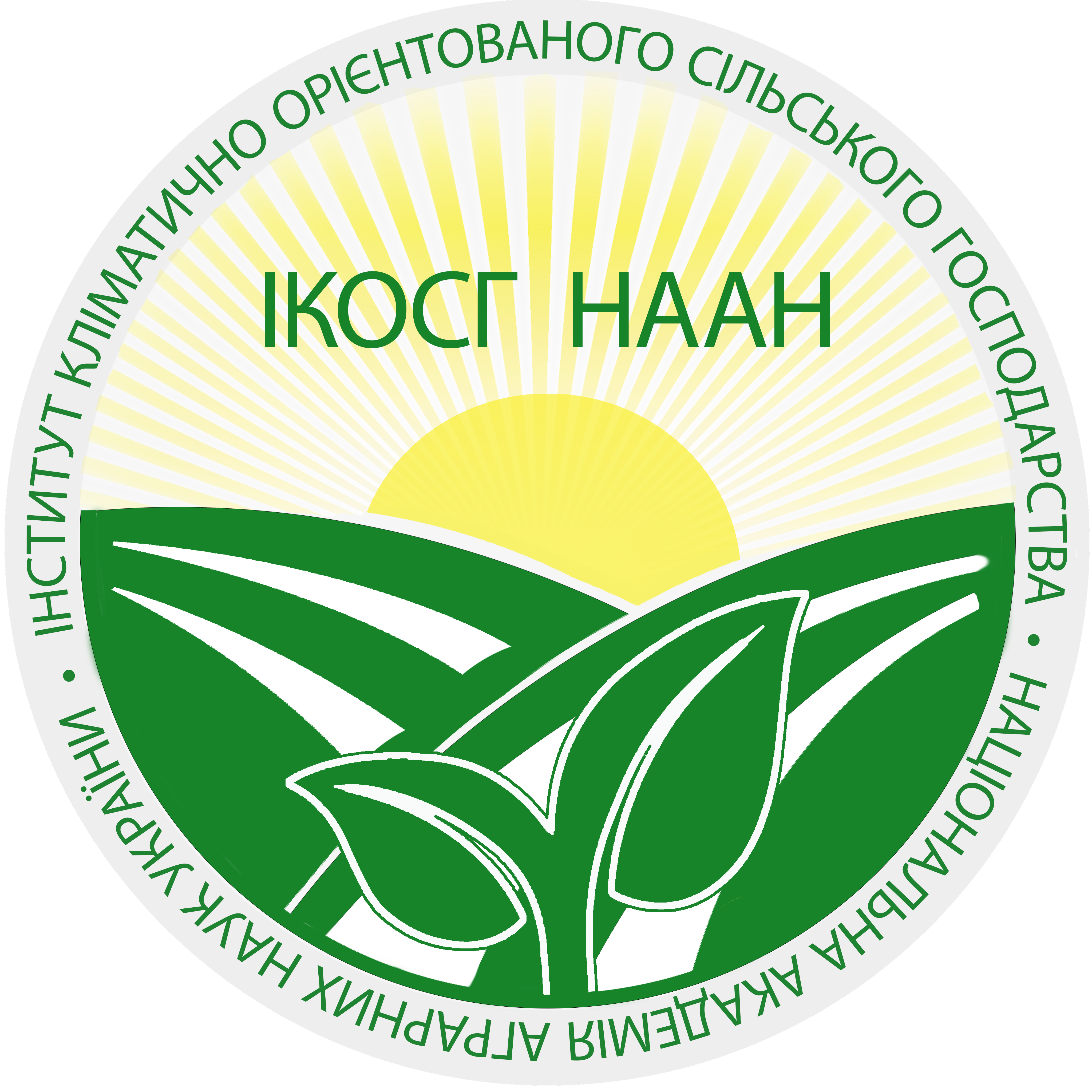Кореляційний аналіз і аналіз шляху продуктивності та її компонентів у ячменю ярого
Анотація
Кореляційний й аналіз коефіцієнтів шляху встановлює характер складних взаємозв’язків між урожайністю та її компонентами. Мета роботи полягає у визначенні коефіцієнтів кореляції 7-ми кількісних ознак рослин сортів і ліній ячменю ярого та результатів шляхового аналізу продуктивності (маси зерна з рослини) в різних еколого-географічних зонах. Методи. Провели аналіз за основними показниками продуктивності: довжина стебла, продуктивна кущистість, довжина колоса основного стебла, кількість зерен з колосу, маса зерна з колосу, маса зерен з рослини, маса 1000 зерен. Визначали парні коефіцієнти кореляції та аналіз коефіцієнта шляху продуктивності за допомогою програмного забезпечення OPSTAT. Результати. Аналіз середніх величин кореляцій в різних зонах для однакової вибірки сортів ячменю ярого свідчить, що основними ознаками для добору на продуктивність є маса зерна з основного колоса, крупність зерна та довжина колоса. Ознаки продуктивне кущіння та кількість зерен у колосі можуть змінюватися під впливом середовища, тому добір за цими ознаками може бути не досить ефективним. Висновки. В умовах трьох зон установлено істотну високу пряму кореляцію маси зерна з рослини з продуктивністю колоса, крупністю зерна та довжиною колоса. У різних зонах формування продуктивності, за показником аналізу шляху, залежало від різних ознак: в умовах НСДС найбільший прямий позитивний ефект на продуктивність виявила кількість зерен в головному колосі (1,148), потім крупність зерна (0,934) та кількість продуктивних стебел (0,589); в умовах МІП високий прямий позитивний ефект на продуктивність виявила кількість продуктивних стебел (0,593) та крупність зерна (0,583); в умовах ІСГС прямий позитивний ефект на продуктивність виявила кількість продуктивних стебел (0,571) та маса зерна з колоса (0,476).
Посилання
2. Sinebo W. Yield relationships of barleys grown in a tropical highland environment. Crop Science. 2002, 42: 428–437.
3. Vasylenko A.О., Vus N.О., Ponurenko S.H., Shevchenko L.M., Bezuhlyi I.M., Glyantsev A.V. Аdvanced correlation analysis of the performance of pea varieties. Селекція і насінництво. 2023, Вип. 123. 6–17.
4. Полякова І.О. Кореляційно-регресійний аналіз господарських ознак в селекційній роботі з льоном олійним. Науково-технічний бюлетень Інституту олійних культур НААН. 2020, № 29. С. 92–101. DOI: 10.36710/ioc-2020-29-09.
5. Перегрим О.Р. Кореляційні зв’язки між ознаками продуктивності в селекції конюшини повзучої (Tifolium repens L.). Передгірне та гірське землеробство і тваринництво. 2016, Вип. 59. С. 136–143.
6. Жупина А.Ю., Базалій Г.Г., Усик Л.О., Марченко Т.Ю., Сучкова В.М., Міщенко С.В., Лавриненко Ю.О. Успадкування маси зерна колоса гібридами пшениці озимої різного еколого-генетичного походження в умовах зрошення. Аграрні інновації. 2022, № 14, С. 152–160. DOI https://doi.org/10.32848/agrar.innov.2022.14.22
7. Riaz A.T., et al. Developing a Selection Criterion Using Correlation and Path Coefficient Analysis in Sunflower (Helianthus Annuus L.). Helia. 2019. 10.1515/helia-2017-0031.
8. Wright S. Correlation and causation. J. Agric. Res. 1921, 20: 202–209.
9. Selvaraja C.I, Nagarajan P. Inter relationship and path coefficient studies for qualitative traits, grain yield, and other yield attributes among maize (Zea mays L.). Int. J. of Plant breeding and Genetics. 2011, 5(3): 209–223.
10. Desta Abebe Belete, Atsedemariam Tewachew, Mulugeta Bitew, Tafere Mulualem. Correlation and path coefficient studies for yield and its components of upland rice (Oryza sativa L.) in North Western Ethiopia. Journal of Scientific Agriculture. 2022, 6: 14–19 doi: 10.25081/jsa.2022.v6.7253.
11. Drikvand R., Samiei K., Hossinpor T. Path coefficient analysis in Hulless Barley under rainfed condition, Australian Journal of Basic and Applied Sci. 2011, 5(12): 277–279.
12. Saleh M.M., Salem K.F.M., Elabd A.B. Definition of selection criterion using correlation and path coefficient analysis in rice (Oryza sativa L.) genotypes. Bull Natl Res Cent. 2020, 44 (143). https://doi.org/10.1186/s42269-020-00403-y.
13. Vidya C, Jagtap V.S, Santhosh N. Correlation and path coefficient analysis for yield and yield attributing characters in chilli (Capsicum annum L.) genotypes. Int J Curr Microbiol Appl Sci. 2018, 7(1): 3265–3268. doi:10.20546/ijcmas.2018.701.390.
14. Компанець К.В., Козаченко М.Р., Васько Н.І., Наумов О.Г., Солонечний П.М., Святченко С.І. Кореляція між кількісними ознаками сортів ячменю ярого. Селекція і насінництво. 2016, Вип. 109. C. 40–46.
15. Nessa D., Islam H., Mirza S.H., Azimuddin M., Genetic variability, correlation and path analysis in barley (Hordeum vaulgare L). Bangladesh J. Bot., 1998, 32: 181–185.
16. Четверик О.О., Козаченко М.Р. Коефіцієнти кореляції та детермінації між ознаками сортів пшениці м’якої озимої. Селекція і насінництво. 2015, Вип. 107. С. 105–114.
17. Mohammad Zaefizadeh, Marefat Ghasemi, Jafar Azimi, Majid Khayatnezhad and Babak Ahadzadeh; Correlation Analysis and Path Analysis for Yield and its Components in Hulless Barley. Advances in Environmental Biology. 2011, 5(1): 123–126.
18. Sherwan Esmail Tofiq, Taban Najmalddin Hama Amin, Suaad Muhammad Sheikh Abdulla, Dana Azad Abdulkhaleq. Correlation and path coefficient analysis of grain yield and yield components in some barley genotypes created by full diallel analysis in sulaimani region for F2 generation. International Journal of Plant, Animal and Environmental Sciences. 2015, Vol. 5, Issue-4, P. 76–79.
19. Hailu A., Alamerew S., Nigussie M., Assefa E. Correlation and Path Coefficient Analysis of Yield and Yield Associated Traits in Barley (Hordeum vulgare L.) Germplasm. Adv Crop Sci. 2016, Tech 4: 216. doi:10.4172/2329-8863.1000216.
20. Matin M.Q.I. et al. Int. J. Appl. Sci. Biotechnol. 2019, Vol. 7(2): 243–247. DOI: 10.3126/ijasbt.v7i2.24635.
21. Sheoran O.P., Tonk D.S., Kaushik L.S., Hasija R.C., Pannu R.S. Statistical Software Package for Agricultural Research Workers. Recent Advances in information theory, Statistics & Computer Applications by D.S. Hooda & R.C. Hasija Department of Mathematics Statistics, CCS HAU, Hisar. 1998, 139–143.






